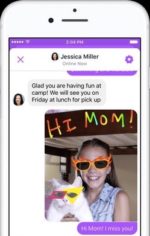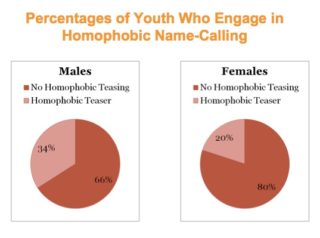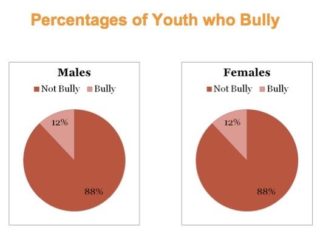 There’s growing consensus among researchers in many countries, including ours, that “cyberbullying” isn’t the most useful term for online hurtful behavior and may be inhibiting what we can learn from young people about what’s harmful to them – that we need to find out from youth themselves what hurts them and to what degree it happens online.
There’s growing consensus among researchers in many countries, including ours, that “cyberbullying” isn’t the most useful term for online hurtful behavior and may be inhibiting what we can learn from young people about what’s harmful to them – that we need to find out from youth themselves what hurts them and to what degree it happens online.
The latest example of that, by Global Kids Online, spanned multiple countries – Argentina, Brazil, Bulgaria, Chile, Montenegro, the Philippines, Serbia and South Africa – with surveys of 9-17 year-olds in those countries.
What actually upsets them?
The researchers first asked them if they’d experienced “something upsetting” online in the past year before asking anything more specific, like “hurtful peer behavior” (“so as not to put ideas in their heads,” they write). Across all the countries, 14-36% had seen something upsetting, which could be anything from violence in news reports to harassment to sexually explicit content, depending on how each child’s defined “upsetting.” The number was much higher in Argentina (78%), but so were the respondents’ ages (13-17 only, not 9-17), suggesting a correlation between age and exposure to negativity.
Then young respondents were asked how upsetting the experience was, and, for example in Montenegro, of the 5% of 7-19 year-old Internet users who’d encountered something upsetting in those 12 months, 36% (of that 5%) were “fairly” or “very” upset by what they’d experienced.
The researchers then asked about hurtful peer behavior both online and offline, to get a sense of the connection between online and offline harassment (see below about U.S. researchers’ effort to do that). Overall – online and offline –12-36% of 9-17 YOs across all eight countries had experienced hurtful peer behavior in the past year, while only 1-11% had experienced it online in the past year. This tracks with U.S. research, which has found that young people still experience more offline peer harassment than the online version (see this on the latest from our National Academies). As for what constitutes “hurtful behavior,” the respondents were asked about everything from “nasty or hurtful messages” (aimed at themselves or someone else), feeling excluded or left out, being threatened, and having one’s personal information or password used by someone.
Similar questions here in the U.S.
This report reminds me of similar work done in 2015 at University of New Hampshire’s Crimes Against Children Research Center, which wanted to get at the impacts of online vs. offline harassment (and didn’t even use the term “cyberbullying”). The authors found that about a third (34%) of U.S. youth – in this study 10-20 year-olds – had experienced harassment of some kind over the previous year, 54% of it involving no technology, 15% involving technology (only) and 31% both in person and online. Contrary to what we all hear in the news so much, the negative emotional impact of online-only harassment is “significantly lower” than the in-person kind, the CCRC researchers found. The U.S. respondents found the harassment most distressful or hurtful when it was both offline and online.
It’s clear there’s still no consensus about either the definition or the value of the term “cyberbullying” – and, as the Global Kids Online authors write, the global confusion about it has been “exacerbated by mass media that generally promote alarming statistics without inquiring into definitions….”
So we can be thankful that scholars keep questioning it. It seems to me Profs. Sameer Hinduja and Justin Patchin at the Cyberbullying Research Center use a term the public recognizes in order to spread awareness of solid academic research on hurtful online behavior and its effects. They too have given careful thought to terminology – see this page in their site that pulls together a lot of thinking on the subject. Scroll down to “What is cyberbullying?” to zoom in, where they, like Global Kids Online, say that adults’ terms and definitions may not be useful when talking with young people about what about their online experiences does – and doesn’t – hurt.
When they survey students, Patchin and Hinduja write, “we define cyberbullying in a way that we feel is more relevant to their everyday experiences. Specifically, we say that ‘cyberbullying is when someone repeatedly makes fun of another person online or repeatedly picks on another person through email or text message or when someone posts something online about another person that they don’t like.” And, as do the Global Kids Online researchers, “we also ask about specific behaviors that might constitute cyberbullying (such as: hurtful comments, threats, rumors, pictures, or videos posted or circulated online).”
So we’re making progress, and researchers are honoring a fundamental right of young people: to be consulted on issues that affect them.








 “Bullying leads to homophobic name-calling,” which is prevalent in middle school, Dr. Espelage said, “and it also predicts sexual harassment perpetration in middle school” and high school, as well as dating violence in high school and then colleges and universities.
“Bullying leads to homophobic name-calling,” which is prevalent in middle school, Dr. Espelage said, “and it also predicts sexual harassment perpetration in middle school” and high school, as well as dating violence in high school and then colleges and universities. For that reason, even though most bullying prevention programs don’t factor in gender, they need to, she said in her talk. “We have to recognize that this socialization process, this homophobia and sexual harassment that happens to both boys and girls happens way before we send them to college.
For that reason, even though most bullying prevention programs don’t factor in gender, they need to, she said in her talk. “We have to recognize that this socialization process, this homophobia and sexual harassment that happens to both boys and girls happens way before we send them to college.

 The series has its proponents as well as critics. On one hand, it exposes issues today’s high school students often face (among them, depression, bullying, sexual assault and suicide); on the other – if viewed uncritically – it could expose vulnerable young people to way too much. It’s about what happens after a suicide and – as Headspace, Australia’s mental healthcare hotline for schools,
The series has its proponents as well as critics. On one hand, it exposes issues today’s high school students often face (among them, depression, bullying, sexual assault and suicide); on the other – if viewed uncritically – it could expose vulnerable young people to way too much. It’s about what happens after a suicide and – as Headspace, Australia’s mental healthcare hotline for schools,